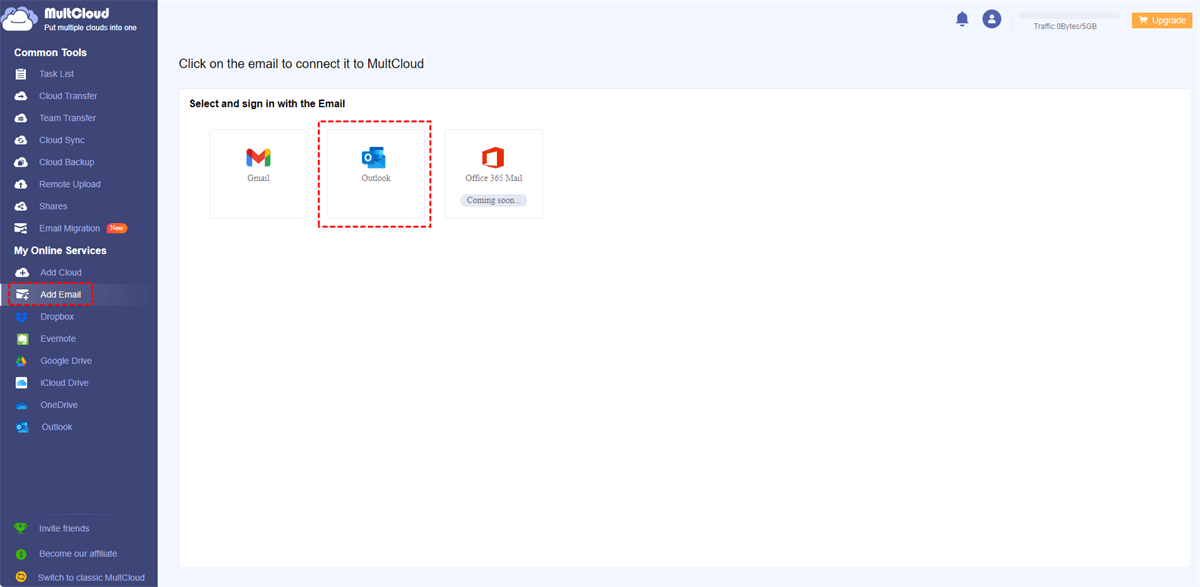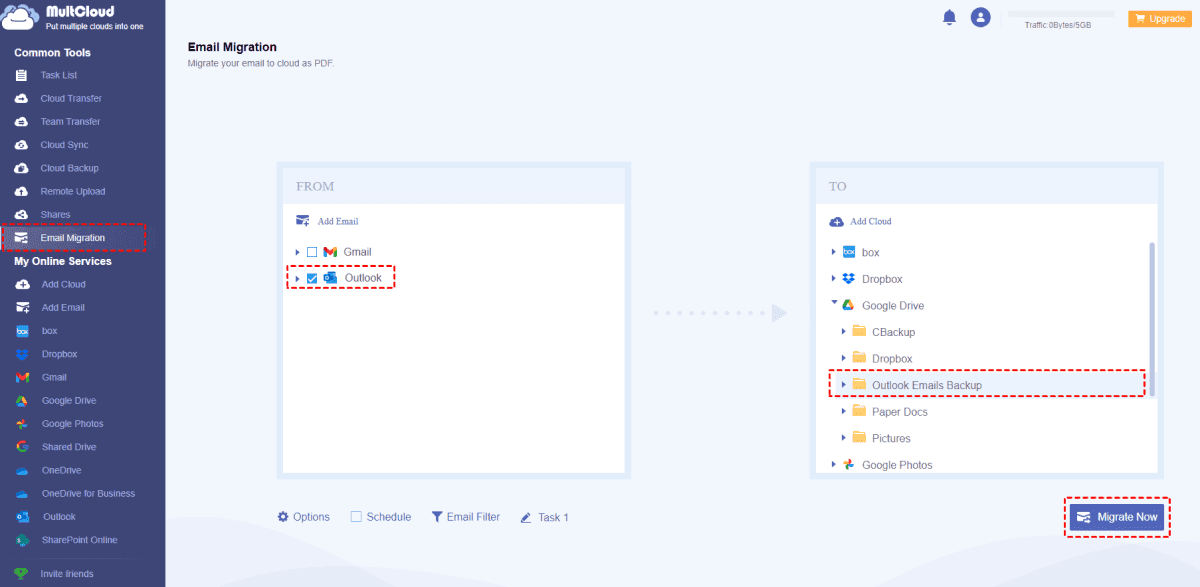Master the art of safeguarding your Outlook data with a complete backup process. Enhance data security and streamline recovery effortlessly.

Performing an Outlook full backup makes you benefit from the following:
Performing an Outlook full backup safeguards your data enhances productivity, and ensures business continuity. Thus, how to create Outlook full backup and keep them safe? You can find the solutions here.
To fully back up all emails in Outlook, you have 3 effective ways to make it, let’s get started to find out.
Here, we will introduce the best way to take Outlook full backup. To perform Outlook 365 full backup effectively, you can take advantage of the powerful web-based cloud file manager - MultCloud, which allows you to backup everything in Outlook to Google Drive, Dropbox, OneDrive, MEGA, Wasabi, Backblaze, and other mainstream clouds, or download Outlook emails in bulk as PDFs. It’s flexible for you to export Outlook emails as an archive anywhere so that you can restore data anytime if your Outlook emails get lost.
Here are the simple steps to perform Outlook full backup to Google Drive with MultCloud:
1. Please create a MultCloud account and then log in.
2. Tap Add Email > Outlook, then follow the steps to add. Click Add Cloud > Google Drive to add.

3. Click Email Migration, choose Outlook as the source, and Google Drive as the destination.

Tips:
4. Press Migrate Now to create an Outlook full backup.
An Outlook PST file is a container for storing your emails, contacts, calendar events, and more in Microsoft Outlook. So, you can create Outlook full backup by exporting Outlook emails as PST files to save locally. Here is how it works:
1. Please ensure you have installed the Outlook desktop app on your computer, and open it.
2. Click File > Open & Export > Import/Export subsequently.
3. Choose Export to a file, and click Next.
4. Select Outlook Data File (.pst), and select Next.
5. Choose the Outlook mail folder to backup, and click Next.
6. Find a location for your Outlook full backup, and click Finish.
Limitation: Keep in mind, PST files have size limits and can impact performance if not managed properly. Modern alternatives like OST files and cloud synchronization are gaining popularity.
For proficient users, you can manually copy the .pst file to back up Outlook emails and restore it by pasting. However, the complexity arises from the varying storage locations of .pst files across different Outlook versions.
Depending on the operating system, the .pst file can be found in these locations:
PST file location in Windows 8 and Windows 10:
PST file location in Windows 7 and Windows Vista:
Across all operating systems (including Vista, Windows 7, Windows 8, and Windows 10), the default location of the PST file is: C:\Users\YourUserName\Documents\Outlook Files
For Vista, Windows 7, Windows 8, and Windows 10, the .pst file is located here:
In previous versions of Windows and Outlook, .pst files can be found in one of the following locations:
Note: "AppData" is a hidden folder. To make it visible, navigate to Control Panel > Folder Options, switch to the View tab, and select "Show hidden files, folders, or drives" under "Hidden files and folders".
How to perform Outlook full backup, please find your PST file location on your computer, copy it, and paste it to another location, like an external hard drive, USB flash drive, or NAS, and even upload PST files to the cloud.
Performing a full backup ensures your Outlook data is secure and recoverable in case of data loss, hardware failures, or other unexpected events.
An Outlook full backup includes emails, contacts, calendars, tasks, notes, settings, and other Outlook data.
It's recommended to back up regularly, such as weekly or monthly, depending on how frequently you update your Outlook data.
Yes, you can save your backup to an external drive or another secure storage location.
The PST file is stored locally on your computer's hard drive. The location may vary based on your Outlook version and operating system.
Large PST files can affect performance. Consider archiving older data or using MultCloud to create Outlook full backup.
PST files store data locally, while OST files synchronize data with the email server. PSTs are suitable for backup.
In conclusion, performing a full backup of your Microsoft Outlook data is a pivotal practice that ensures the safety, accessibility, and continuity of your vital information. How to perform Outlook full backup? Find the instructions above to protect your Outlook emails online or locally.
Besides, you’re able to backup Outlook emails to a USB flash drive, Google Drive, etc., or backup Outlook emails from a browser. With MultCloud, you’re also able to migrate files between cloud storage so that you can merge files from different clouds. So why not give it a try?